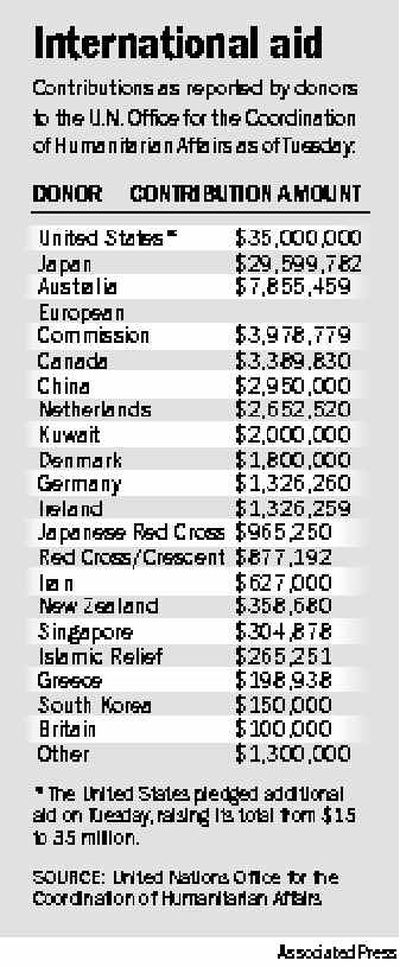Online generosity surges in wake of tsunami tragedy

WASHINGTON – Faced with searing images of suffering and grief in South Asia, Americans are finding an instantaneous way to reach out to tsunami victims: on their home computers.
Like never before, people are turning to the Internet in droves to donate money, the latest step in a revolution that has altered everything from shopping to presidential campaigns.
“This is like 1951, when television really took off,” Paul Saffo, director of the Silicon Valley-based Institute for the Future, said Wednesday. “We are in the middle of a fundamental shift from mass media to the personal media of computers and the Internet, and charitable giving is a logical progression.”
At Amazon.com alone, more than 53,000 people had donated over $3 million by Wednesday evening after the company made an urgent appeal on its Web site. Catholic Relief Services was so overwhelmed with Web traffic that its site crashed. Online donations to the Red Cross outstripped traditional phone banks by more than 2-to-1.
The online generosity was a key part of a massive U.S. response to the crisis in South Asia. From neighborhood coffee shops to large corporations, hundreds of thousands of people donated millions of dollars and a variety of goods. The relief effort ran the gamut from a tavern in Washington promoting a New Year’s Eve bash called “Celebrate and Donate” to a San Jose coffee shop giving away free beans to those donating $10.
“Online, by phone, the mail,” marveled Steven Gotfried, a spokesman for Washington-based B’nai B’rith International, which has been overwhelmed with offers of support. “Every two or three minutes, we get a donation. People are really giving from the heart.”
Much of that giving came from people sitting at their computers. That has happened before, primarily after the Sept. 11, 2001, terrorist attacks. But relief officials said the scale of online giving has grown dramatically since then.
As of Tuesday, for example, 25,000 people had visited RedCross.org to pledge money to aid the tsunami victims. During the same period, about 9,000 people called the donor line, officials said.
Donations after Sunday’s calamity in South Asia are already outpacing those after other disasters. From Aug. 13 to 23, the Red Cross estimated that it received $19 million in pledges for victims of Hurricane Charley. As of noon Wednesday, the Red Cross had received $18 million for tsunami victims.
“Technology has had a huge impact on our ability to disseminate information about what we’re doing,” said Red Cross spokeswoman Kara Bunte.”The support has been overwhelming, amazing.”
Relief officials say money, rather than clothing or food, is the fastest way to get help to affected countries.
“Sending supplies at this point is not going to make much difference,” said Nadadur Vardhan, president of the Hindu Temple Society of Southern California. The temple is anticipating nearly 20,000 people at a New Year’s prayer service that has been reorganized as a massive fund-raiser for victims. Most of the temple’s members have family or friends in India who were affected by the disaster.
At Seattle-based Amazon.com, a group of employees decided to do something to help the tsunami victims. So dozens of workers, some of them originally from the affected areas in Asia, toiled through the night to rejigger Amazon.com’s Web site. The large posting centered at the top of the site prominently features the American Red Cross symbol and a link for people to donate to the relief effort.
“It definitely came as a groundswell from our employees,” said Amazon.com spokesman Craig Berman. “As soon as it went up, we started seeing donations kick in. It was virtually instantaneous.”